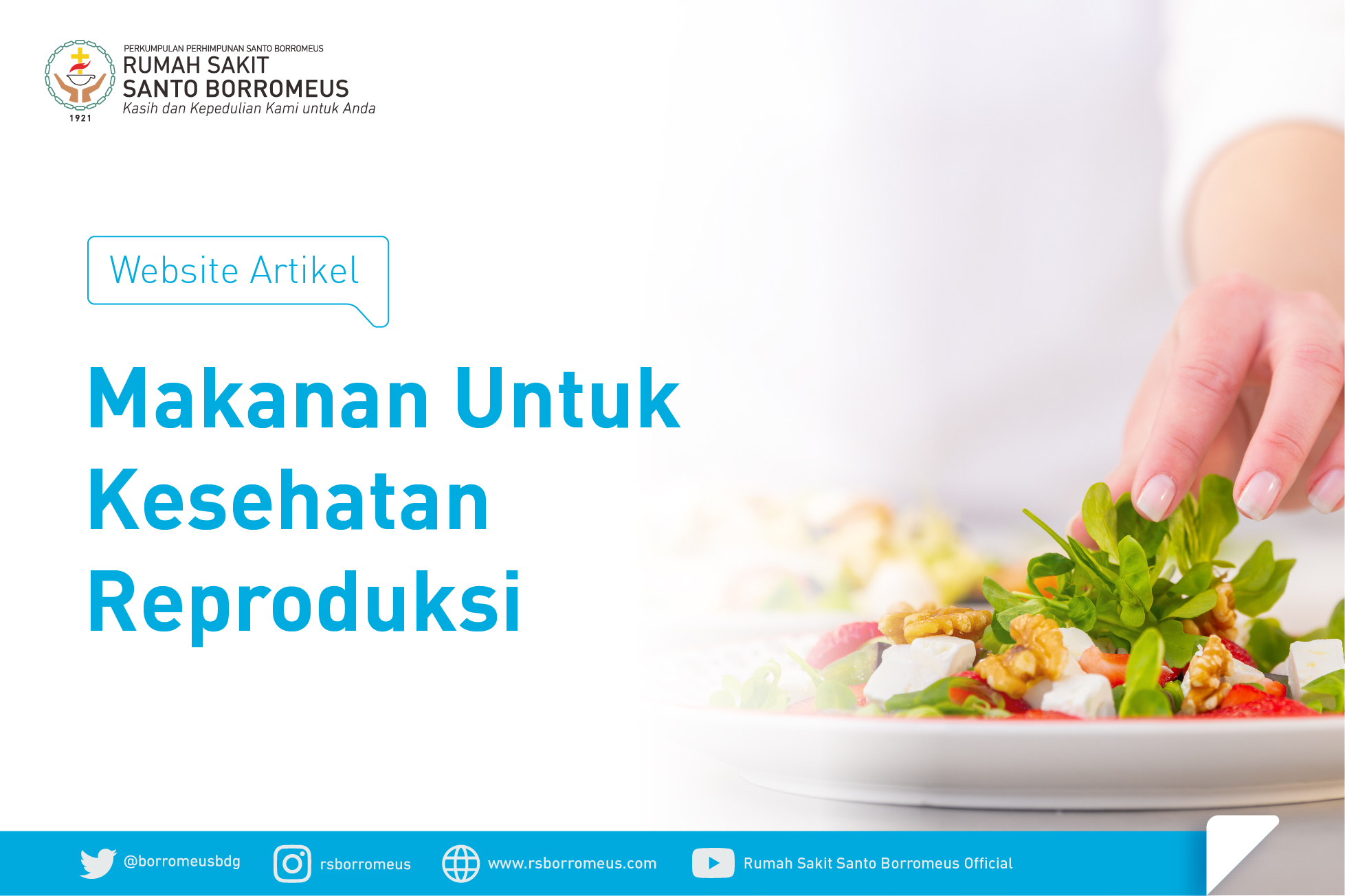
Foods for Reproductive Health
Fertility is the optimal operation of reproductive organs in both men and women, so that they can perform the function of fertilization (conception) properly. There are two factors that affect reproductive health, namely endogenous (genetic) factors that include cellular, tissue and organ stages, and exogenous (external) factors that include the environment and lifestyle. The pattern of macro and micronutrient intake that is fulfilled will achieve the maturity of cells, tissues, and organs so that they can function properly. Women with underweight nutritional status due to lack of nutritional intake will experience reproductive hormone deficiency which results in an increase in the incidence of infertility in women. In addition, women who are overweight or obese, or in other terms have a body of 10% - 15% of normal body fat, then the woman will suffer from impaired follicular growth in the ovaries associated with a syndrome, namely Poly Cystic Ovarian Syndrome (SPOK).
Food is one of the important factors in supporting fertility and general reproductive health. Energy and macro substances such as carbohydrates, fats, proteins, vitamins and minerals are needed for the formation of reproductive hormones. To live a healthy and fit life, balanced nutrition guidelines are required. Text
- Carbohydrates
Carbohydrates are the largest source of energy in Indonesian eating culture. During premenstruation, it is not uncommon for teenagers to experience a decrease in appetite. Meanwhile, during this period there is an increase in food or energy requirements to prevent anemia. Meanwhile, teenagers tend to consume fast food which is incomplete in nutritional substances which will indirectly cause the body to lack macro and micro nutrients. If this situation continues, it will affect the function of the body's organs and disrupt reproductive function, such as menstrual disorders.
- Proteins
Protein consists of various amino acids including arginine. Arginine is an amino acid that functions to strengthen sperm survival and prevent infertility. Sources of arginine are fish, beef, chicken, nuts. Consuming foods high in arginine will help stimulate the production of the hormone estrogen during menstruation, thereby reducing inflammation and menstrual cramps.
- Fat
Fat plays an important role as a source of essential fatty acids needed for growth and as a transporter of fat-soluble vitamins. Essential fatty acids such as omega 3 fatty acids, the body needs around 3% of total energy. Women with a low intake of omega 3 fatty acids are more likely to experience menstrual pain (dysmenorrhea). Studies show that consuming omega-3 fatty acids in your daily diet will reduce menstrual pain. Tuna and salmon contain omega 3 fatty acids.
- Vitamin A
Vitamin A is a fat-soluble nutrient, essential for the eyes, growth, cell differentiation, reproduction and immune system integrity. Carrots, red sweet potatoes, yellow and orange fruits such as mangoes and green leaf vegetables are sources of beta carotene for sperm maturation.
- Vitamin C
Vitamin C is a water-soluble vitamin which is able to ward off free radicals, prevent sperm agglutination (clumping), maintain the structure and development and function of spermatozoa cells. Vitamin C is natural ascorbic acid which is found in many fruits such as oranges, lemons, watermelon, strawberries, mangoes and pineapples as well as green vegetables such as broccoli and cauliflower.
- Folic acid
Folic acid plays a role in the metabolism of amino acids which are needed in the formation of red blood cells. The benefit of folic acid is that it increases the number and quantity of sperm by up to 74 percent. Sources of folic acid are dark green vegetables, cabbage, fruit such as strawberries, whole grains, meat, milk and whole grains.
- Vitamin E
Vitamin E (alpha-tocopherol) is an antioxidant that protects body cells against free radicals. Vitamin E is widely available in oils produced from seeds, such as; peanut oil, wheat bran oil, corn oil and sunflower seed oil. Apart from that, vitamin E is also found in green vegetables, cereals, liver, egg yolks, milk fat, nuts, kiwi, mango and butter. Vitamin E is able to protect spermatozoa against peroxidative damage and decreased motility.
- Zinc
Zinc functions to protect sperm from bacteria, contains antioxidants that will protect sperm from free radicals which can damage cells, and also affects the number and health of sperm. The best sources of zinc are animal protein sources, especially meat, liver, shellfish and eggs. Zinc in animal products is more easily absorbed than zinc from plant foods such as cereals and nuts.
- Selenium
Selenium functions as an antioxidant that reduces free radical activity. In general, seafood and internal organs are food sources rich in selenium, besides meat, grains, dairy products, and eggs are good sources of selenium. Selenium is important for the development of healthy ovarian follicles, which are responsible for egg production in women.
- Calcium
Calcium is a micronutrient that plays a role in reducing pain during menstruation (dysmenorrhea). Research on calcium supplementation conducted at Metropolitan Hospital in New York, United States, showed that 75% of PMS sufferers had less pain. The main source of calcium is milk and its processed products. Fish eaten with bones including dried fish, cereals, nuts and their preparations, and green vegetables are good sources of calcium.
Daftar Pustaka:
- https://doc-pak.undip.ac.id/1902/1/Modul.Makanan.Kaya.Antioksidan.Untuk.Peningkat.Fertilitas.pdf
- http://www.poltekkes-denpasar.ac.id/files/JSH/V10N2/Ni%20Made%20Dewantari1%20JSH%20V10N2.pdf



